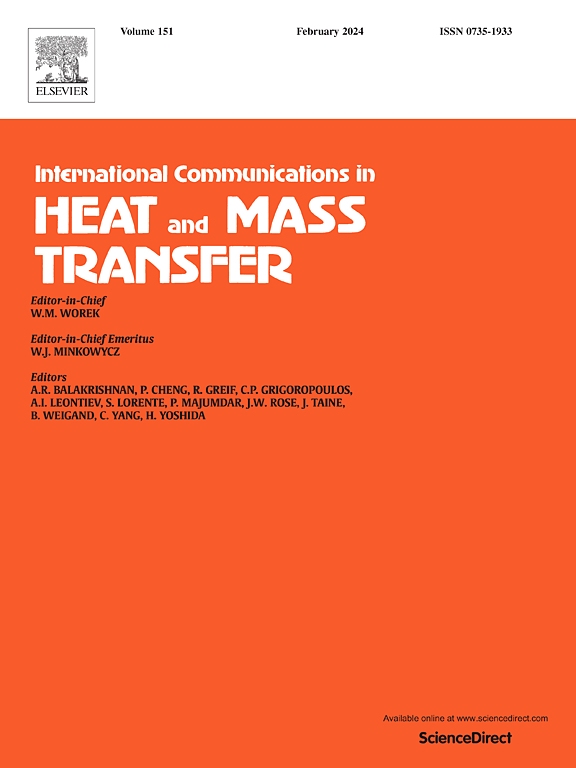Investigation of natural convection flow and heat transfer characteristics of liquid/supercritical CO2 at constant volume
IF 6.4
2区 工程技术
Q1 MECHANICS
International Communications in Heat and Mass Transfer
Pub Date : 2025-04-05
DOI:10.1016/j.icheatmasstransfer.2025.108925
引用次数: 0
Abstract
In this paper, a CFD model was used to study the natural convection of CO2 under different initial states in a cylindrical closed high-pressure chamber. Under the premise of constant total power and heat input, the heating methods are central heating, external circumferential heating and bottom heating. The effects of CO2 properties and heating scheme on the flow field structure, temperature stratification and flow heat transfer of the medium in the closed chamber were analysed by numerical model. It was found that in most cases, with the development of flow in the cavity, the boundary layer velocity is further weakened, the wall heat transfer tends to be stable, and one or more vortices are formed at the bottom of the cavity. The choice of heating scheme leads to significant changes in the structure of natural convection flow field in the cavity. The corresponding heat transfer coefficient of bottom heating is usually 3–5 times that of the other two heating schemes and the field temperature uniformity is better. When the temperature is close to the pseudo-critical point, the wall heat transfer is enhanced, but the fluidity shows different rules under different heating schemes. Overall, it is recommended to use internal heating, and the heating element is placed horizontally near the lower end of the cavity.
求助全文
约1分钟内获得全文
求助全文
来源期刊
CiteScore
11.00
自引率
10.00%
发文量
648
审稿时长
32 days
期刊介绍:
International Communications in Heat and Mass Transfer serves as a world forum for the rapid dissemination of new ideas, new measurement techniques, preliminary findings of ongoing investigations, discussions, and criticisms in the field of heat and mass transfer. Two types of manuscript will be considered for publication: communications (short reports of new work or discussions of work which has already been published) and summaries (abstracts of reports, theses or manuscripts which are too long for publication in full). Together with its companion publication, International Journal of Heat and Mass Transfer, with which it shares the same Board of Editors, this journal is read by research workers and engineers throughout the world.

 求助内容:
求助内容: 应助结果提醒方式:
应助结果提醒方式:


